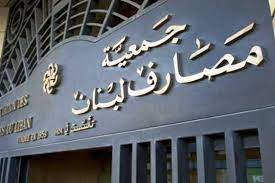
by bma52 | Apr 15, 2022 | Uncategorized
Lebanon Banking Sector Crisis
Lebanon’s financial collapse since 2019 is a story of how a vision for rebuilding a nation once known as the Switzerland of the Middle East was derailed by corruption and mismanagement as a sectarian elite borrowed with few restraints.
The Lebanon financial and economic crisis is likely to rank in the top 10, possibly top three, most severe crises episodes globally since the mid-nineteenth century.
The Debt mountain reached 150% of national output, the GDP per capita fell by 40%, while the bank loans had fallen by 25% year on year.
Banking Non-performing Loans to total gross loans (%) world development indicator in Lebanon.
According to the World Development Indicators, a nonperforming loan (NPL) is a loan in which the borrower is default and hasn’t made any scheduled payments of principal or interest for some time
The increasing drift of NPLs will affect the banking efficiency resulting in banking crises.
The increase in NPL was 50% year by year starting 2018.

Commercial banks and other lending (PPG + PNG) (NFL, current US$) World Development Indicator in Lebanon.
This increase in NPLs was reflected sharply on the monetary value from commercial banks as they stopped issuing transactions deposits and forced a sharp limit on loans.
2019 and 2020 recorded high negative loss in PPG and PNG.

Any effort to control the growth must, therefore, start by strengthening or adjusting the balance of payments; a reduction in borrowing without an accompanying adjustment of the balance of payments will simply result in payments arrears.

by Lea El Halabi | Apr 15, 2022 | Generic, Visualization
Does a Country’s Borrowing Policy Affect its Population’s Income level?
The Case of Lebanon

DOLLAR? LBP?
WHAT’S THE EXCHANGE RATE TODAY?
DISCOUNTING CHECKS? AT WHAT RATE?
WHAT???? 20%????
THIS MEANS I’M LOSING 80% OF MY MONEY!!!
I WAS DOING OK BUT NOW I CAN BARELY MAKE ENDS MEET…
This has unfortunately been the sad reality that
theLebanese people have been living for since
October of 2019.
WHY?
Because a Banking | Financial | Currency | Crisis
Made a Huge Bubble Burst!

BUT HOW DID WE GET HERE?

Lebanon has had a budget deficit for over 20 years
and has been borrowing from external parties
for as long as we can remember.
So, as Lebanese citizens, we are born indebted.
A country’s national debt affects its population’s income level:
-
Growing debt has a direct effect on economic opportunities
-
If high levels of debt crowd out private investments, workers would have less to jobs do and therefore earn lower wages

Countries with LOWER DEBT exhibit HIGHER INCOME levels per capita.
SO HOW HAS LEBANON’S DEBT BEEN CHANGING OVER TIME?

WHAT CAN WE DO TO MAKE THINGS BETTER?

Potential Solutions include but are not limited to:
-
Supporting Production and Services Sectors leading to more Job Creation and eventually More Wages
-
Improving Trade Agreements leads to more exports which would Reduce Budget Deficits and make the country economically healthier
-
Attracting Foreign Direct Investments by providing a healthy capital market (ex: improving Reporting Practices) which leads to More Investments & More economic opportunities, More Jobs and eventually More wages
IS THERE PROOF?
Countries with Open Trade Policies seem to have higher income levels

Countries with Updated Reporting Practices also have higher income levels

SO, WHAT ARE THE RECOMMENDATIONS?
STOP borrowing from international Agencies
CONTROL High National Debt Levels
Implement Policies to boost the economy













